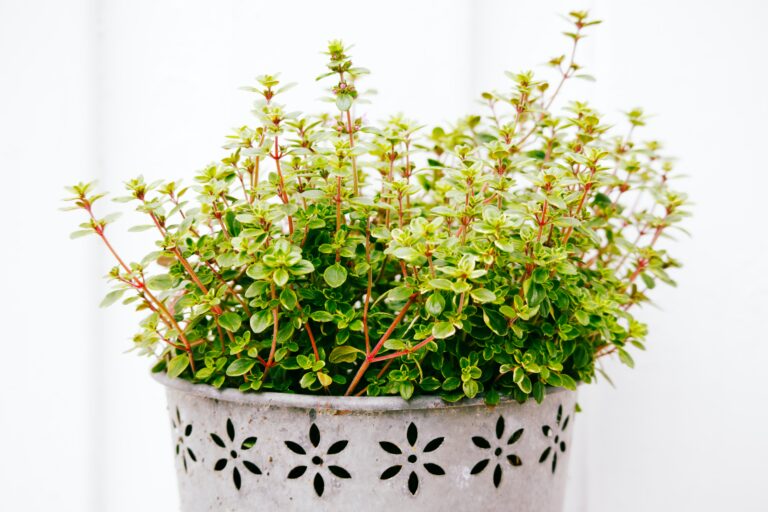Thyme, an aromatic herb cherished in culinary and medicinal traditions, has a rich history dating back to ancient civilizations. Its botanical name, Thymus vulgaris, pays homage to its humble origins in the Mediterranean region. This perennial plant boasts small, delicate leaves and clusters of dainty flowers in varying shades of pink or purple.
Among its diverse array of varieties, common ones include English thyme, French thyme, and lemon thyme. Each variety offers a unique blend of flavors and scents, making thyme an indispensable ingredient in kitchens and a delightful addition to gardens worldwide.
Care
Thyme is a perfect plant if you are a beginner and want a wonderful herb in your garden. Just pay attention to these:
- Light: these plants thrive in full sunlight, requiring six to eight hours of daily light, making them ideal for sunny garden spots or well-lit indoor locations like windowsills or sunrooms.
- Soil: they do pretty well in poor soil conditions as well, preferring well-draining sandy or loamy soil or even rocky gravel, making clay or terracotta pots a good choice for containers as they absorb excess moisture and provide optimal growing conditions.
- Water: not the most thirsty plants, just allow the soil to dry completely between waterings.
- Temperature: they thrive in temperatures between 68-86 Fahrenheit temps.
Propagation
Thyme can be propagated through various methods and is a resilient plant valued for its thymol essence, adding a unique flavor to dishes in a wide range of cuisines. It can be grown from seeds or propagated through root division, cuttings, and layering techniques.
Common Pests
Frequently Asked Questions
For optimal growth, plant young thyme plants from Bonnie Plants® in well-draining soil with a pH of around 7.0, ensuring they receive full sun and are set out after the last spring frost.
How often do I water thyme?
Water established thyme plants every other week or once a month, ensuring the soil is fully dry before watering and allowing it to dry out again. Thyme’s drought resistance allows for occasional delays in watering without worry.
How fast does thyme grow?
Thyme is generally considered a moderately fast-growing herb, with its growth rate varying depending on various factors such as environmental conditions, care, and the specific variety of thyme. On average, under favorable conditions, thyme can grow a few inches in height each year.
Should I let my thyme flower?
If you primarily grow thyme for culinary purposes, some gardeners prefer to remove the flowers to encourage more leaf growth and maintain the plant’s flavorful foliage.
Where does thyme grow best?
Thyme thrives in a warm, sunny location, benefiting from ample sunlight to enhance its flavors. It is drought-tolerant and prefers well-drained, alkaline soil, but can also grow in relatively poor or rocky soil conditions.
